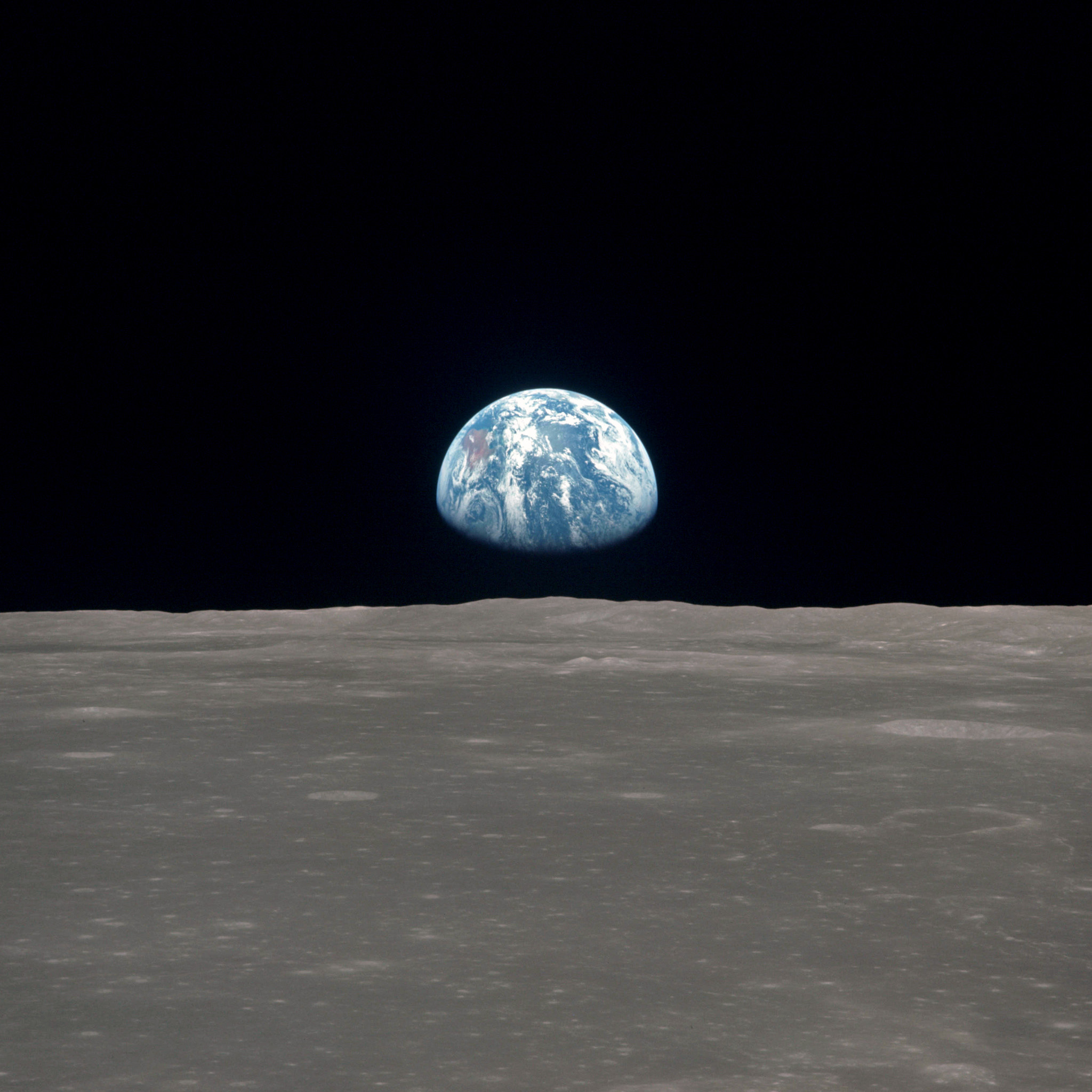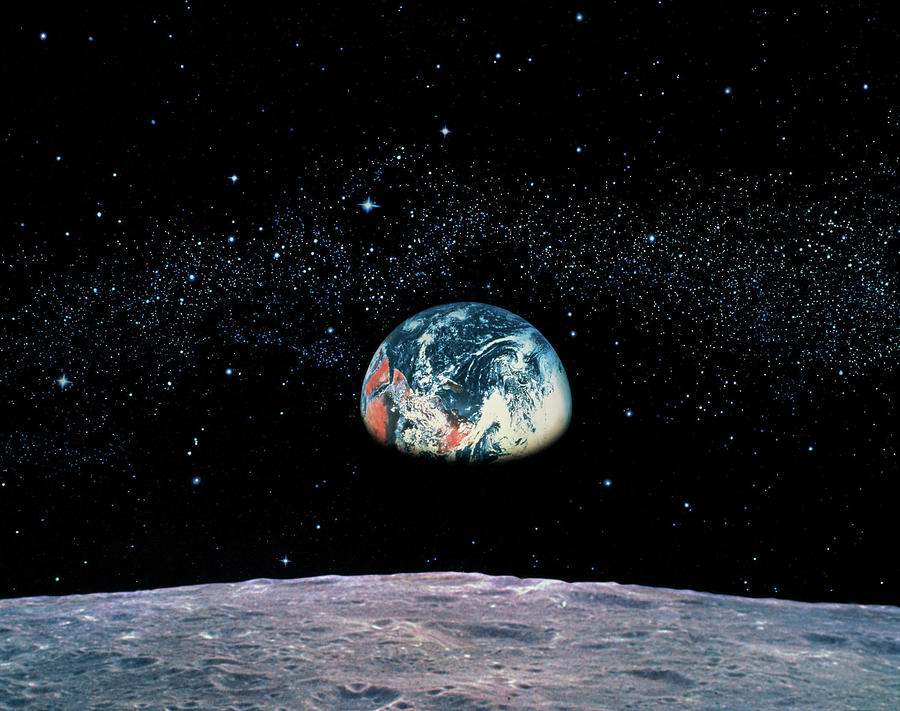

The Moon takes 27.3 days to orbit Earth, but the lunar phase cycle (from new Moon to new Moon) is 29.5 days. As the Sun sets, the Moon rises with the side that faces Earth fully exposed to sunlight (5).The Moon has phases because it orbits Earth, which causes the portion we see illuminated to change. At full Moon, the Moon is behind Earth in space with respect to the Sun. At first quarter, the half-lit Moon is highest in the sky at sunset, then sets about six hours later (3). In other words, the Moon is between Earth and Sun. The arrows displayed after the Illumination, Distance, and Latitude values indicate their downward or upward trend.At the new Moon phase, the Moon is so close to the Sun in the sky that none of the side facing Earth is illuminated (position 1 in illustration). As the Moon's position varies from one revolution to the next, the arrow indicating the expected lunar path may not point exactly towards the Moon's current position. The circle shows the Moon's anticipated path in the upcoming weeks, including the next 3 or 4 Moon phases. Because of the Earth's axial tilt, the Sun's assumed location shifts up and down slightly over the course of the year in this animation, appearing on the same horizontal plane as the Earth solely during the March and September equinoxes. The Sun is not shown, however, the Earth's illumination indicates its position to the left.

The Moon phases visualization shows the positions of the Moon and Earth in real time.



 0 kommentar(er)
0 kommentar(er)
